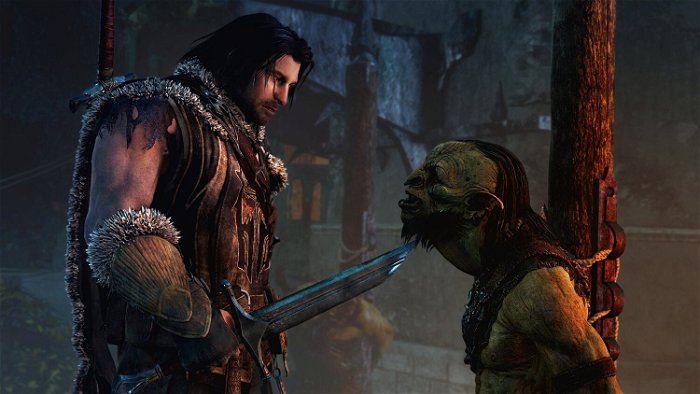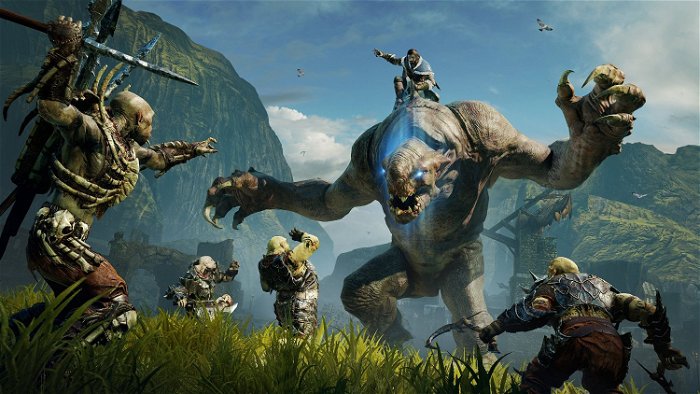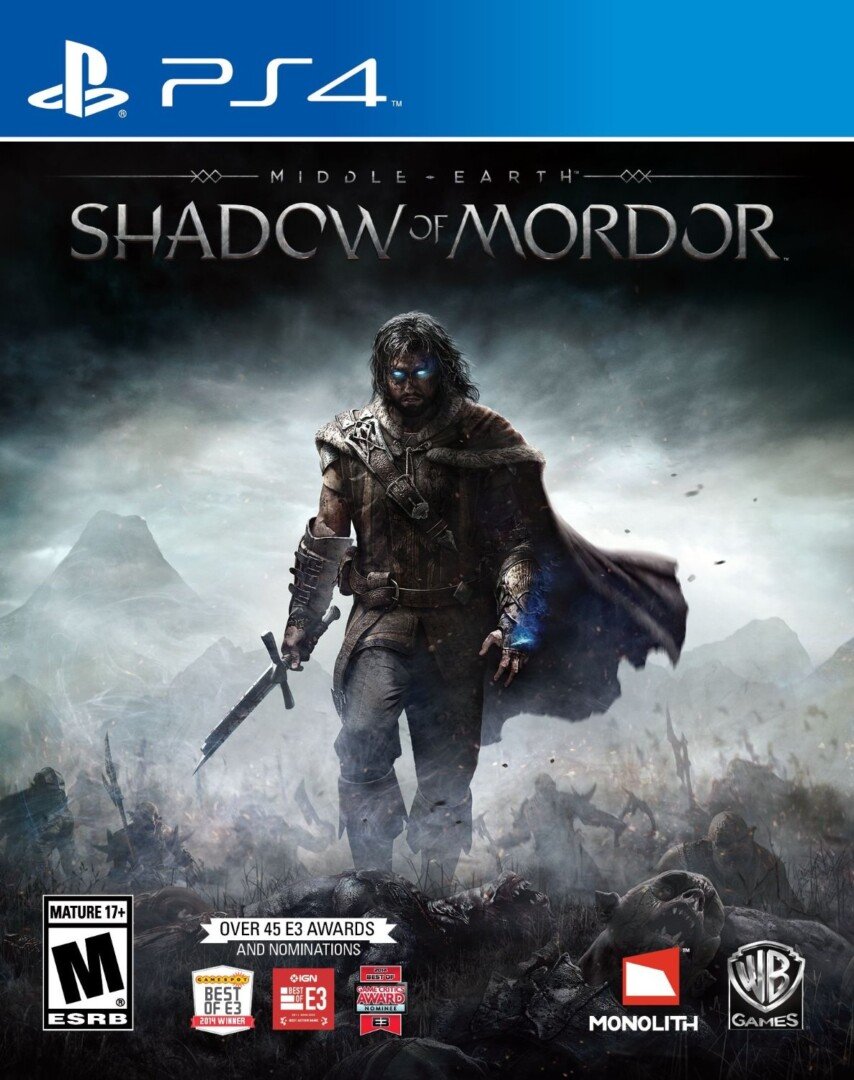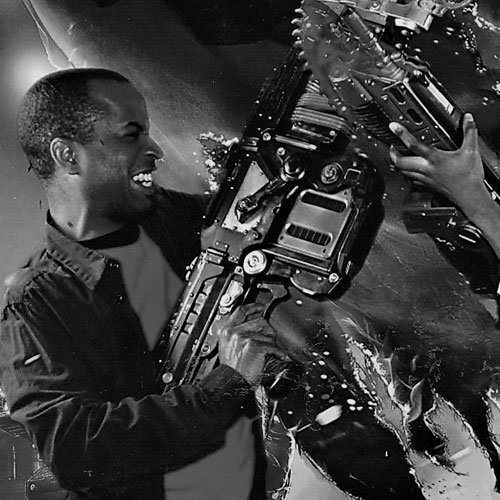It only takes about an hour of playing Middle-Earth: Shadow of Mordor before one realizes that this is not your parents’ Lord of the Rings-licensed videogame. Beneath the game’s authentic surface trappings beats the merciless, hyper-violent heart of what can only be a modern-action adventure game made for the new console generation. Consider the climactic battle of Helm’s Deep from The Two Towers as a necessary primer if you consider yourself the squeamish type, but don’t be surprised if this game ends up scratching an unknown itch for bloodlust so effectively that you catch yourself blushing from enjoyment.
The combat borrows heavily from one of Warner Brothers’ other successful franchises, the Batman: Arkham series; that is, basic actions such as attacking, dodging and countering are each handled by an individual button, while more complex actions (e.g. special attacks and finishers) are executed by using them in combination. That said, those who have grown weary or even frustrated with the well-trodden formula of the Arkham games can rest assured that Mordor is far more than an Arkham clone. For one thing, the combo system is far more forgiving in terms of timing and much kinder towards multiple or errant button presses as well as pauses in-between them, and there is even a perk that can be unlocked later in the game that allows the player to take a hit without his or her combo string being affected. But more importantly, Talion and Middle-Earth do not share the boundaries of Batman and the Arkhamverse, neither literally or figuratively.

Players can even choose to openly “brutalize” their opponents as an alternative to a stealth kill, in which the idea is to terrify and cause surrounding enemies to flee as opposed to staying hidden, and they can also repeatedly “shank” enemies in similar fashion when grabbing them from behind. Instead of relying on a utility belt with a growing arsenal of tools at his disposal, as an undead Talion only has need of his trusted weapons and Ranger/Wraith abilities, which can be enhanced with magic runes as well as strengthened by his Wraith companion as he regains more of his memories. And since Talion is technically part-Wraith, players are able to “play” and “have fun” with powers that have traditionally been off-limits in the Tolkienverse, such as snaring an enemy’s leg with a Wraith Arrow to temporarily hold him in place or “teleport” via the same arrow across the map to dispose of the enemy up close. Finally, as an open-world game, the rules of engagement that one would be accustomed to in an Arkham game have been turned on their head. Talion is free to withdraw from battle as he likes, or pursue and hunt down any opponent who tries to escape. Battle is not confined to a single room or a pre-determined number of foes; if other enemies happen to be in earshot or come across a fight that Talion is involved in, chances are likely they’ll also join the fracas, depending on their personality.
“Talion and Middle-Earth do not share the boundaries of Batman and the Arkhamverse, neither literally or figuratively.”
This brings us to the true jewel in Shadow of Mordor’s crown, the revolutionary “Nemesis” A.I. system, and by extension the Orc (i.e. Uruk) hierarchy upon which the game is built. With Nemesis, every Orc that Talion encounters has the ability to become a deadly rival, be it a high-ranking Warchief, Captain, or even a bottom-feeding foot soldier. For example, if Talion kills a high-rank Uruk, a power vacuum is created in which other Uruks of the same rank or lower will battle each other in order to obtain that position for themselves. In addition, each and every Uruk has his own personality, strengths and weaknesses, and the key to defeating particular, high-ranked Uruks will be often be dependent on Talion’s knowledge of that enemy’s identity, location and weaknesses, which can only be uncovered by defeating and interrogating other Uruks connected to his target as friend or foe.
Thus Talion can affect the structure of Uruk society by strategically killing powerful Uruks, make his work easier by killing off said Uruks’ bodyguards beforehand, and influence the outcome of certain power struggles by intervening in key events (i.e. missions) tied to those struggles. Ultimately, once he grows powerful enough, he can even bend Uruks that he has defeated to his will and have them do his work for him. However, Talion can’t simply rest easy just because he’s immortal, as resurrection comes at a heavy price. If an Uruk manages to kill him, even a lowly archer who gets a lucky shot on him in a mob, that Uruk will be promoted up the chain and the resulting upward domino affect can potentially make the player’s job much harder, as every foe will become that much tougher. Simply put, Nemesis is a brilliant system. While it does not necessarily change the overall direction of the plot, it all but guarantees that the experiences players have along the way will be uniquely different from those of their friends, and even with the best laid plans on the part of the player, a strong element of randomness and unpredictability will prevail in every encounter.

Naturally, there are some chinks in the armor. Since just about any enemy and any encounter in battle can be special, run-ins with so-called nemeses can become so frequent that they are less special as a result, as the narrative build-up is usually absent in a random encounter. Case in point, this reviewer had no less than three Uruk captains doggedly pursuing him across the countryside with an entourage of twenty orcs within the first 30 minutes of the game, before even having done anything to gain notoriety (other than coming back from the dead). Having a rivalry isn’t quite as cool when it has no meaning yet to the player. And speaking of meaning, players not up to date on their Tolkien will definitely want to visit the ”Appendices” section of the game often to clarify the differences between Orcs, Uruks, Uruk-hais, Grog, Graugs, Ghuls, Carragors etc. as the game tosses many of these terms around in both dialogue and text well before newcomers encounter and realize which are which. The Orc slang and rough accents are fantastic, however—your filthy Tark ears will be burning.
To sum up, Middle-Earth: Shadow of Mordor is a must-play experience for this new console generation. It goes without saying that it’s a beautiful looking and sounding game that comes as close to the Peter Jackson films as one can expect, and the average player can look forward to spending a minimum of 15-20 hours in Mordor if they are strictly aiming to complete the game, potentially double if they take on every mission and seek out every artifact. But it’s the no-holds barred action and next-generation Nemesis System that steals the show.






